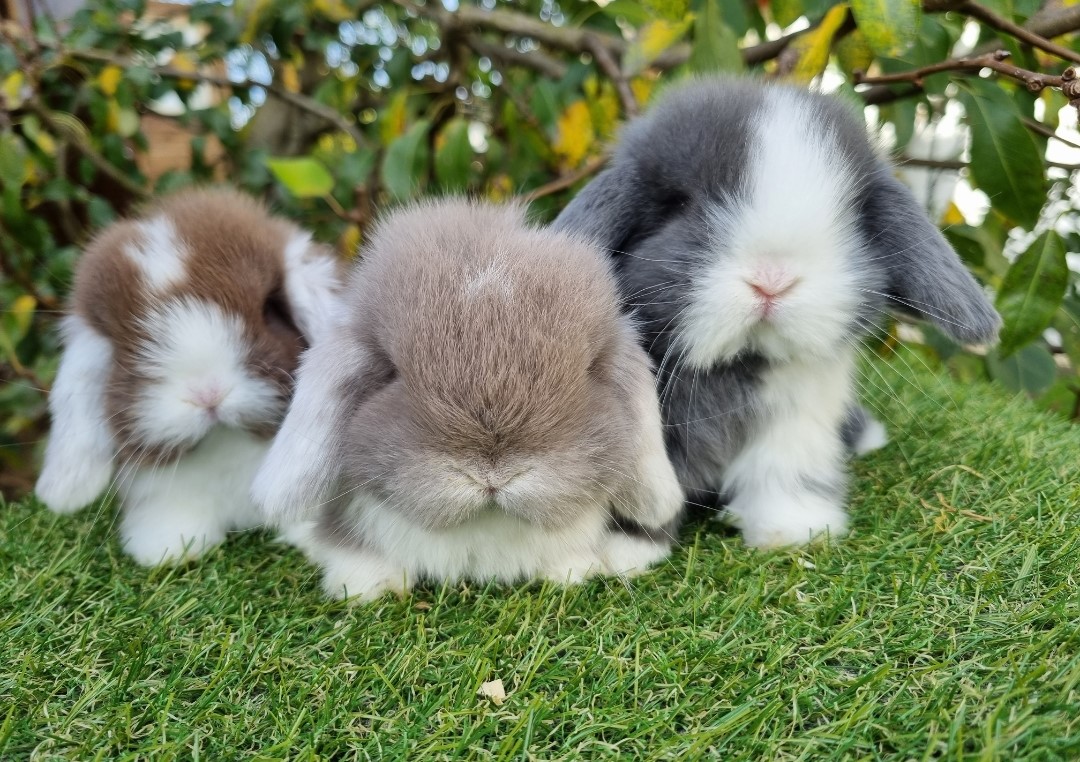The Mini Lop is arguably one of the most adorable rabbits you’ll ever come across — and that’s saying something! Not to be confused with the similarly named UK breed, the Mini Lop first appeared in Germany during the 1950s. It was developed by crossing German Big Lops with small Chinchilla rabbits. In 1972, Bob Herschbach discovered the breed, then called the Klein Widder, at a German National Rabbit Show and helped introduce it to the United States. Since then, the Mini Lop has gained a devoted following and is now one of the most popular domestic rabbit breeds worldwide.
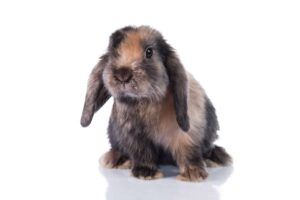
5 Fun Facts About Mini Lops
-
This breed originated by mixing German Big Lops and small Chinchilla rabbits.
-
In Germany, the Mini Lop is called the Klein Widder, meaning “little ram.”
-
Originally, they only came in Agouti and white colors, but today they appear in a wide variety of shades.
-
Despite their name, they aren’t true dwarf rabbits — they have solid, medium-sized bodies.
-
Over the years, they’ve earned nicknames like “Monarch of the Fancy,” “Lop of Excellence,” and even “a basketball with a head.”
Scientific Name
The Mini Lop shares its scientific name, Oryctolagus cuniculus, with all 305 recognized domestic rabbit breeds. In Ancient Greek, oryktos means “dug up,” and lagos translates to “hare.” The Latin word cuniculus can mean both “burrow” and “rabbit,” referencing the animal’s burrowing nature. Their common name reflects their smallish size (compared to other lops) and their signature drooping ears. It’s important not to confuse them with the English Miniature Lop, a different, much smaller breed.
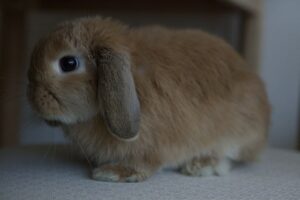
Types of Mini Lops
Mini Lops belong to the order Lagomorpha and the family Leporidae. Their family includes 8 genera, but all domestic rabbits, including Mini Lops, come from the Oryctolagus genus. Within this group, there are several types of lop-eared rabbits, including:
-
American Fuzzy Lop
-
English Lop
-
French Lop
-
Holland Lop
-
Miniature Fuzz Lop
-
Dwarf Lop
-
Velveteen Lop
Appearance
Despite the “Mini” in their name, Mini Lops are medium-sized rabbits with sturdy, muscular bodies. Adults typically weigh between 4.5 and 6.5 pounds, with males tending to be slightly larger. They have a wide head, a full muzzle, and a characteristic arched crown — hence the playful description of them as “a basketball with a head.”
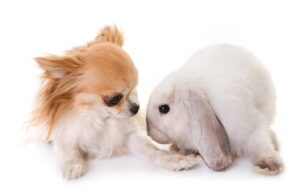
Originally found in Agouti and white, today’s Mini Lops come in a rainbow of colors, including chinchilla, chestnut Agouti, black, opal, white, chocolate, lilac, and orange. In rabbit shows, they’re divided into “solids” and “brokens” based on their color patterns. Their coats are dense, glossy, and plush without being overly long.
One of their standout features is their distinctive lop ears, which hang down rather than standing upright. Ideally, their ears droop about 0.75 to 1 inch below their jawline.
Behavior
Mini Lops are known for being easygoing and cheerful. While they can sometimes be a bit skittish — a trait common to smaller breeds — they generally have friendly, playful personalities. Many owners describe them as bright and responsive, capable of learning tricks, games, and even responding to their names. Like any animal, a startled Mini Lop may nip, but with gentle handling and proper socialization, they’re typically very well-mannered.

Habitat
The Mini Lop was first bred in Germany in the 1950s and introduced to the U.S. in the early 1970s. Today, Mini Lops are found across the globe, wherever domestic rabbits are kept.
They adapt well to both indoor and outdoor living. If kept outside, their hutches should be shaded and protected from extreme weather — insulated in the winter if needed. Despite their moderate size, Mini Lops require spacious living quarters: ideally at least 3 to 4 feet wide, 2 feet deep, and 3 feet high, with plenty of space to hop and play.
Diet
Mini Lops are herbivores, and fresh hay should make up the bulk of their diet, with Timothy hay being a particularly good choice. They can also enjoy small amounts of fresh vegetables and fruits, like leafy greens, beans, pumpkin, broccoli, parsnips, radishes, berries, and apples. Some owners also feed them pellet food, but it should only make up 5–10% of their diet.
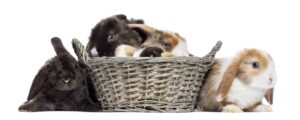
Predators and Threats
While domestic Mini Lops don’t face natural predators in the same way their wild cousins do, they can still be vulnerable to house pets like cats and dogs, as well as outdoor predators such as birds of prey, foxes, badgers, and coyotes. Baby rabbits (kittens) are especially at risk.
Health-wise, Mini Lops can suffer from typical rabbit ailments such as digestive issues, respiratory infections, dental problems (malocclusion), mites, and uterine cancer. Regular veterinary care and careful monitoring are key to keeping them healthy.
Reproduction and Life Cycle
Mini Lops reach sexual maturity around 5 months of age, though it’s best to wait until females are at least 6 months old before breeding. Like their wild ancestors, domestic rabbits are polygynous, and it’s common to mate one male with several females.
After mating, the gestation period is usually 30–31 days. Litters generally consist of 4 to 10 kits, which are born hairless and blind. They rely on their mother’s milk for the first two weeks, begin nibbling on grass around that time, and are usually weaned by one to two months old.
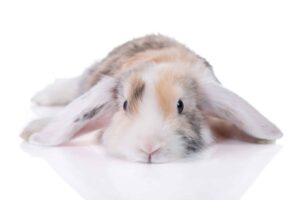
Mini Lops typically live about 7 years, but with good care, they can live up to 10 years or more. As they age, they become more susceptible to common rabbit health problems.
Population
Since their introduction just 50 years ago, Mini Lops have skyrocketed in popularity. From Germany, they spread quickly to the UK and the United States and are now beloved worldwide. Although there aren’t exact figures, it’s safe to estimate there are tens of thousands of Mini Lops in the U.S. alone.
Locations
Although the Mini Lop originated in Germany, today they’re a truly global breed, especially popular in the U.S. and the UK. Groups like the Mini Lop Club of America work to maintain and promote the breed. Wherever you find rabbit enthusiasts — from Europe to all 50 U.S. states — you’re likely to find Mini Lops.
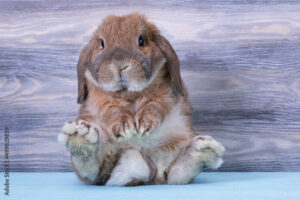
Conservation Status
Thanks to their immense popularity, Mini Lops are not considered at risk. The IUCN has not evaluated the breed. However, it’s worth noting that their wild ancestor, the European rabbit, is classified as endangered due to sharp population declines in its native Iberian range.
